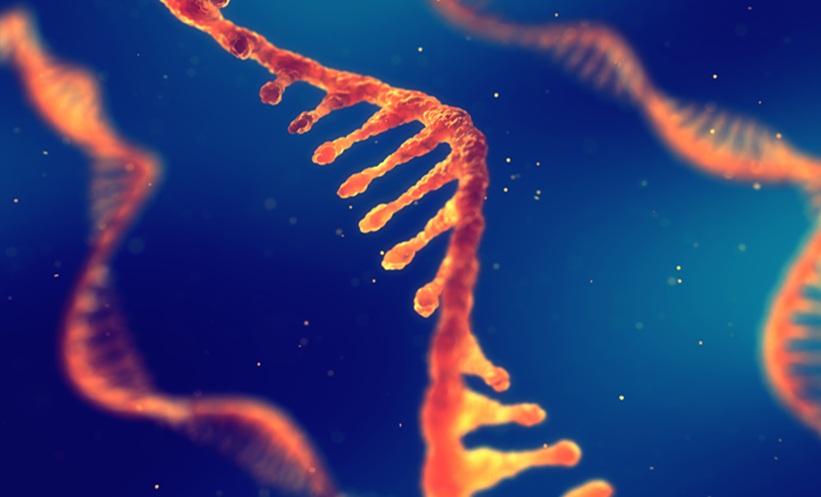Virginia Hernández-Gea | Interventional Hepatologist, Hospital Clínic de Barcelona, Spain; Secretary, Vascular Liver Disease Group (VALDIG); Recipient of the Rising Star in Gastroenterology Award and Young Investigator Award, United European Gastroenterology (UEG); Scientific Committee Member, European Association for Study of the Liver (EASL)
![]()
Was there a particular person or event that encouraged you to pursue a career in hepatology?
I guess it was a combination of different things. Firstly, hepatology is a very wide specialty that combines internal medicine with interventional procedures, and I liked that very much; secondly, I had an excellent group of medical school teachers who instilled in me their passion for the liver and encouraged me to choose the specialty. But it was during my residency that I really realised the challenges, the complexity, and the research opportunities that hepatology offers, and I decided to dedicate my career to this field.
Where have you gained the most valuable experience to date in your career: the Hospital de Sant Pau, Barcelona, Spain; Mount Sinai School of Medicine, New York, USA; the Hospital Clínic de Barcelona, Spain, where you are currently; or elsewhere?
Undoubtedly, all of them intensely contributed to my career in a unique manner; being trained in diverse institutions with several mentors has been a very valuable experience that has had a large positive impact on my training. Adapting to different working environments gives you a broad perspective so you can perceive various ways of facing and solving problems and challenges. I became a hepatologist at the Hospital de Sant Pau and it has had a huge impact on my way of practising medicine, solving clinical challenges, and appreciating clinical research. Mount Sinai, and especially Dr Scott Friedman, really influenced my interest in translational research, and it was at Hospital Clínic where I became an independent investigator and expanded my expertise in liver catheterisation and vascular liver diseases.
A lot of your research and work centres around managing patients with portal hypertension and vascular liver diseases. How have you seen this field change over the course of your career?
The field of portal hypertension has evolved significantly in the last decades due to a better understanding of the physiology and the development of new therapeutic strategies, which has significantly improved the survival of patients. These changes have transformed recent research to focus on the prevention of decompensation, the identification of patients at high risk of complications, and more personalised management and treatment. Moreover, the cure of the hepatitis C virus, together with the emergence of new aetiologies such as fatty liver disease, has also changed the clinical scenario and brought new challenges to the field.
In the field of rare vascular liver diseases, advances in recent years have been very remarkable. The creation of interest groups, such as the Vascular Liver Disease Group (VALDIG), together with the endorsement of scientific societies, has substantially raised awareness and fostered international research studies, which have contributed to advances in the field and stimulated the interest of the scientific community.
How do you keep up to date with developments in liver catheterisation procedures, and how do you see these changing in the near future?
The field of liver haemodynamics and catheterisation was born due to an intimate collaboration of hepatologists with cardiologists trying to adapt their knowledge and techniques to liver diseases. In the last few decades, however, interventional radiologists have moved the field forward. As a hepatologist performing liver catheterisation, I think it is essential to work in a multidisciplinary team to share knowledge about the disease and technical skills, and solve clinically relevant problems in a less invasive way. As said before, changes in the epidemiology of the disease and new challenges also require the modernisation of techniques and expanded indications.
While diagnostic procedures may end up being replaced by non-invasive techniques, therapeutic procedures will play a predominant role in the future, i.e., earlier indications in patients with portal hypertension, personalised treatments, and new indications, such as the recanalisation of the splanchnic territory.
As an educator, where should we expect to see your focus lie in the coming years? Will you publish more work in a similar field to your recent research on liver fibrosis?
We have advanced a lot in the management of patients with liver diseases, but we still have many areas that need extensive research, meaning that hepatology is a super interesting field for new generations. The search for an antifibrotic treatment remains one of the top areas of interest where exciting findings will be revealed in the next few years, but still there is a lot to do. A better understanding of the mechanisms leading to hepatic regeneration is, in my opinion, another promising field that may lead to the discovery of new therapeutic targets and the development of new drugs.
You have been recognised by both United European Gastroenterology (UEG) and the European Association for Study of the Liver (EASL). How important are these organisations as platforms for networking and sharing knowledge in the hepatology community?
It really means a lot! Getting international recognition for my work and achievements was nicely overwhelming. Both prizes are dedicated to young scientists and bring attention to your work, which exponentially increases your network opportunities. This is something that is essential to progress in the field, but is difficult to gain when you are young. Moreover, it boosts your motivation, encourages you to continue pursuing your goals, and facilitates your active involvement in scientific societies.
What does your role as a scientific committee member for EASL involve? Is there anything in particular you are hoping to achieve whilst serving in this position?
My main task is to help EASL to achieve its main aims of pursuing excellence in liver research and clinical practice, promoting education to all stakeholders interested in liver disease, and actively contributing to the diffusion of the latest scientific breakthroughs. During my time working on the Governing Board, I will do my best to raise awareness and make visible the main challenges in my field of expertise to, ideally, encourage future public health policies and increase funding dedicated to the field. I will try to contribute as much as possible to the EASL goals of uniting and collaborating with other scientific societies and reinforce the training of professionals working in hepatology at all stages of their career. And lastly, I hope to contribute to the identification of future challenges in the field in order to anticipate innovative solutions and guarantee that EASL continues to be relevant in the hepatology community.
Have you encountered any great successes or challenges whilst running your translational laboratory, which aims to study and understand the role of liver endothelium in liver diseases?
Research is full of challenges and trying to overcome or solve them sometimes gives you success, and this is what I’ve found since starting my career as a principal investigator. I am very proud of my team’s contribution to the understanding of liver endothelial dysfunction during liver injury. In the last few years, we discovered how autophagy regulates the phenotype of liver endothelial cells upon injury and orchestrates the response to the liver microenvironment and liver fibrosis. More recently, we have demonstrated how supplementation with spermidine (an autophagy enhancer) in the early phases of liver disease protects the liver endothelium from oxidative stress and delays disease progression.








